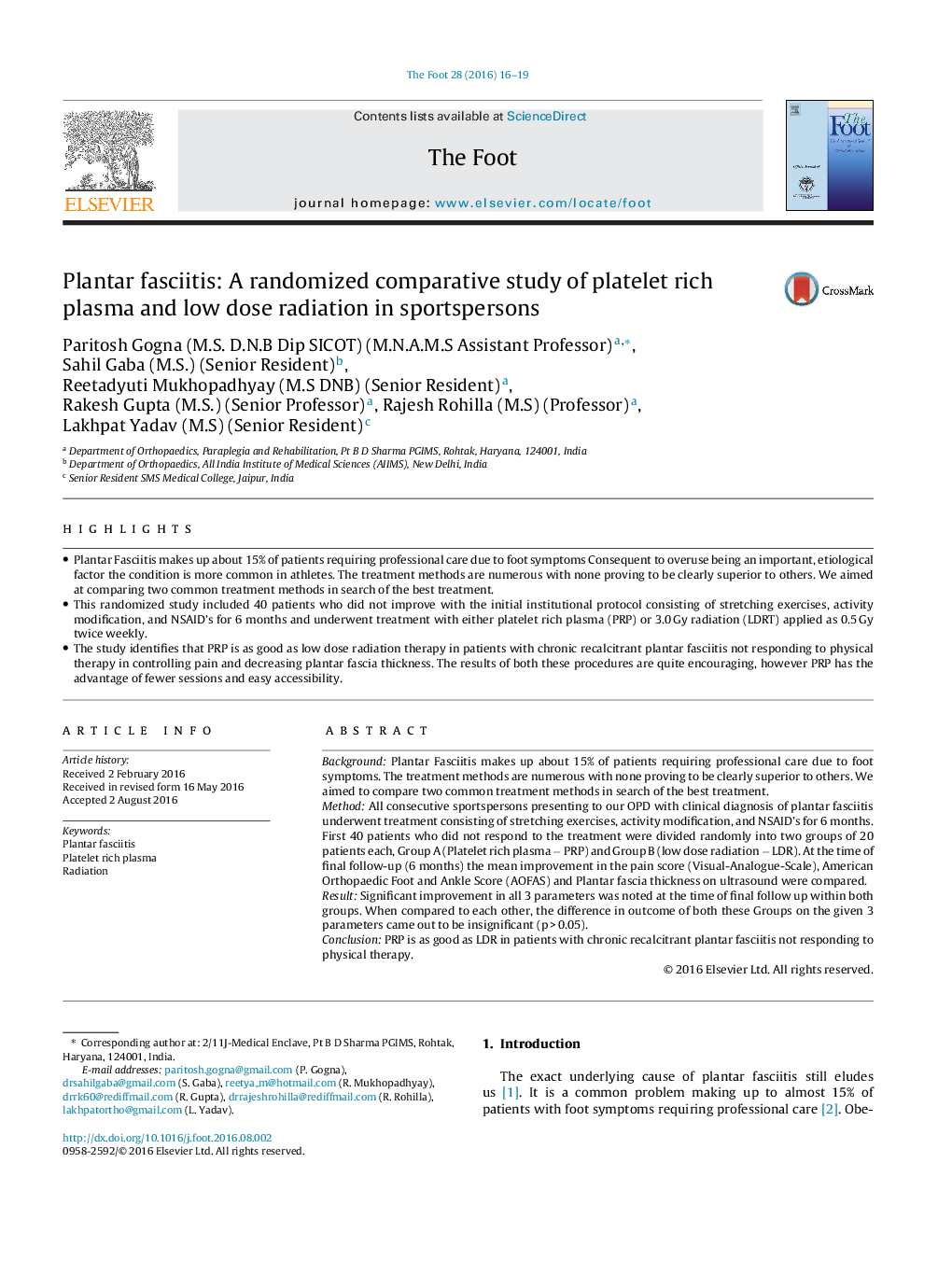| Article ID | Journal | Published Year | Pages | File Type |
|---|---|---|---|---|
| 2712631 | The Foot | 2016 | 4 Pages |
•Plantar Fasciitis makes up about 15% of patients requiring professional care due to foot symptoms Consequent to overuse being an important, etiological factor the condition is more common in athletes. The treatment methods are numerous with none proving to be clearly superior to others. We aimed at comparing two common treatment methods in search of the best treatment.•This randomized study included 40 patients who did not improve with the initial institutional protocol consisting of stretching exercises, activity modification, and NSAID’s for 6 months and underwent treatment with either platelet rich plasma (PRP) or 3.0 Gy radiation (LDRT) applied as 0.5 Gy twice weekly.•The study identifies that PRP is as good as low dose radiation therapy in patients with chronic recalcitrant plantar fasciitis not responding to physical therapy in controlling pain and decreasing plantar fascia thickness. The results of both these procedures are quite encouraging, however PRP has the advantage of fewer sessions and easy accessibility.
BackgroundPlantar Fasciitis makes up about 15% of patients requiring professional care due to foot symptoms. The treatment methods are numerous with none proving to be clearly superior to others. We aimed to compare two common treatment methods in search of the best treatment.MethodAll consecutive sportspersons presenting to our OPD with clinical diagnosis of plantar fasciitis underwent treatment consisting of stretching exercises, activity modification, and NSAID’s for 6 months. First 40 patients who did not respond to the treatment were divided randomly into two groups of 20 patients each, Group A (Platelet rich plasma − PRP) and Group B (low dose radiation − LDR). At the time of final follow-up (6 months) the mean improvement in the pain score (Visual-Analogue-Scale), American Orthopaedic Foot and Ankle Score (AOFAS) and Plantar fascia thickness on ultrasound were compared.ResultSignificant improvement in all 3 parameters was noted at the time of final follow up within both groups. When compared to each other, the difference in outcome of both these Groups on the given 3 parameters came out to be insignificant (p > 0.05).ConclusionPRP is as good as LDR in patients with chronic recalcitrant plantar fasciitis not responding to physical therapy.
